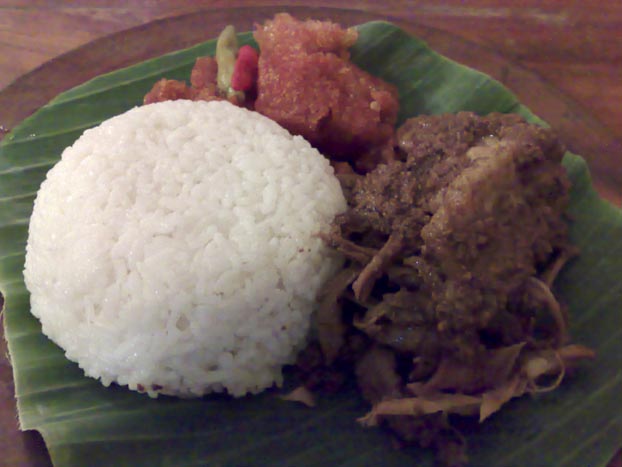

Most of Yogyakartan foods share sweet taste, such as ‘bakpia pathok’ (a white soft cookie filled with green beans), ‘yangko’ (a kind of soft peanut-stuffed tidbit), ‘geplak’ (sugar-glazed young coconut grater), and gudeg.
Gudeg is a concoction of young jackfruit, coconut milk and other local condiments such as garlic and coriander. The color is reddish brown, as the result of the jackfruit, coconut water, and palm sugar, boiled for several hours. Some people are said to add some young teakwood foliages into the jackfruit pot in its early cooking stage, to attain the precise coloration.
Gudeg is usually served on a clay plate, on top of a sheet of banana leaves. Sometimes the vendor just folds the banana leaf, makes it tight it with a sharp piece of palm leaf rib, to form a half-cone-pot called ‘pincuk’.
Many people prefer to eat their gudeg in a ‘pincuk’ because banana leaf produces an appetizing aroma when the hot temperature from the cooking affects it. The ‘pincuk’ is big enough to hold a portion of rice, gudeg and its tasty accessories. A number of options are prepared on the table, for instance: fried chicken, chicken curry with rich coconut milk sauce called ‘santan areh’, hot ‘krecek’ (beef skin) curry, tofu, tempe, and chili sauce.
The gudeg itself is processed in a big clay pot. The traditional method suggests to have the food stirred with a wooden stick. No metal material - especially aluminums - should be used, to keep the taste specific as the food remains healthy.
source:http://www.essortment.com/all/indonesiayogyak_rnsq.htm